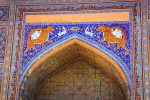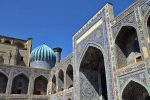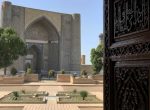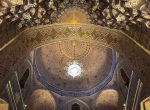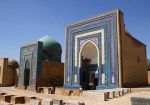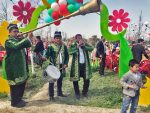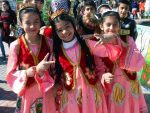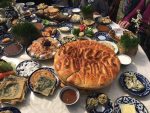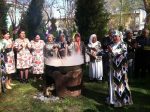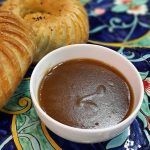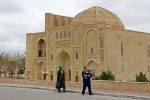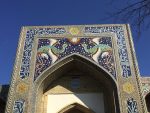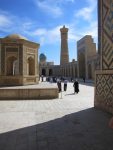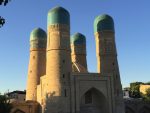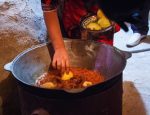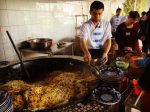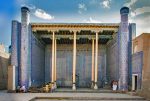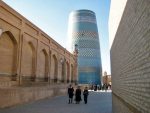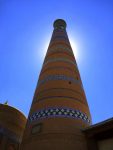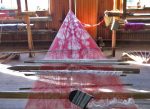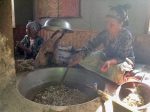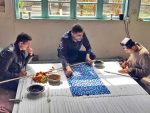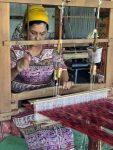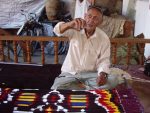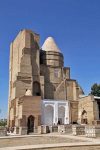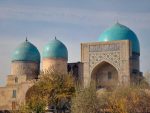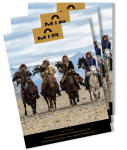Photo credit: Abdu Samadov
Insider’s Guide to the Top 8 UNESCO Sites & Experiences in Uzbekistan
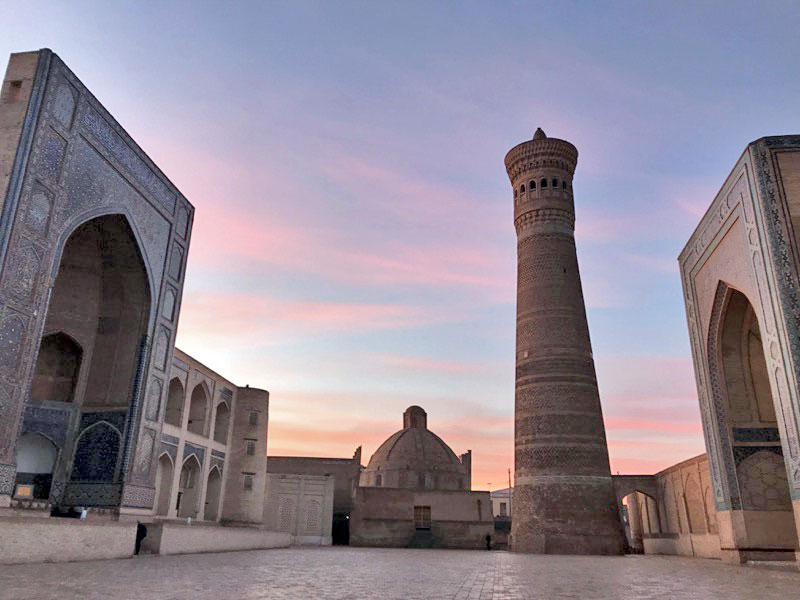
A quest for the quintessentially best in world travel can yield remarkable, thought-provoking experiences. Some travelers find such experiences in historic or natural UNESCO-listed World Heritage Sites, as well as with cultural treasures inscribed on the UNESCO Intangible Cultural Heritage List.
Among these UNESCO listings in 167 countries is an intriguing subset, ones that are threatened by climate change (accelerated erosion of Cappadocia’s rock formations in Turkey); or difficult to get to (Koguryo Tombs, North Korea); or utterly pristine (Plitvice Lakes in Croatia).
There is such a UNESCO-treasured country that incorporates all of these: Uzbekistan. Located in Central Asia, Uzbekistan is capturing international attention and an uptick in travelers, especially due to its outstanding UNESCO sites and cultural heritage treasures – ranging from the Silk Road oasis of Samarkand and pristine Western Tien Shan Mountains to the art of making plov and weaving silk.
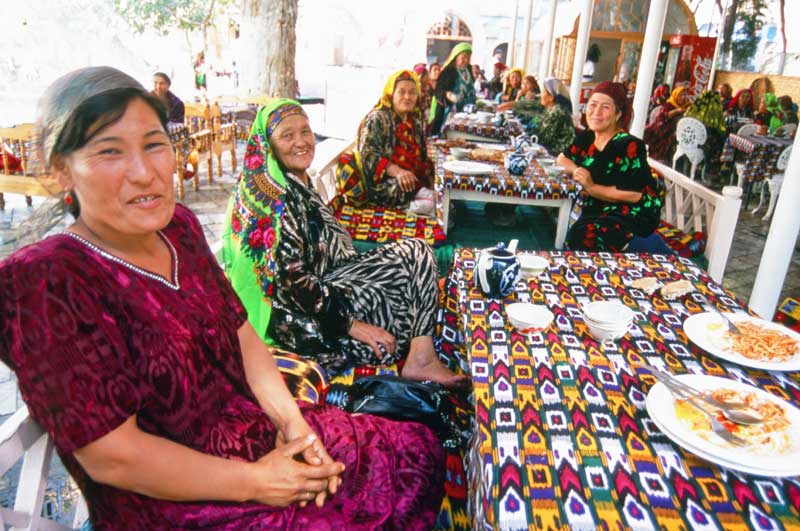
After decades of isolation and mounds of red tape just to visit this country, today thanks to a dizzying speed of travel-friendly changes that have taken place over the last few years under a new reform-minded government intent on sharing this country with the rest of the world, Uzbekistan beckons. With e-visas, high-speed trains, new restaurants, airports, and hotels, Uzbekistan is ready for prime time. Now is an excellent time to add the once-obscure Silk Road nation and its UNESCO trove of sights and experiences to your travel bucket list. Uzbekistan is still relatively uncrowded with visitors, offering true authenticity and open-handed hospitality.
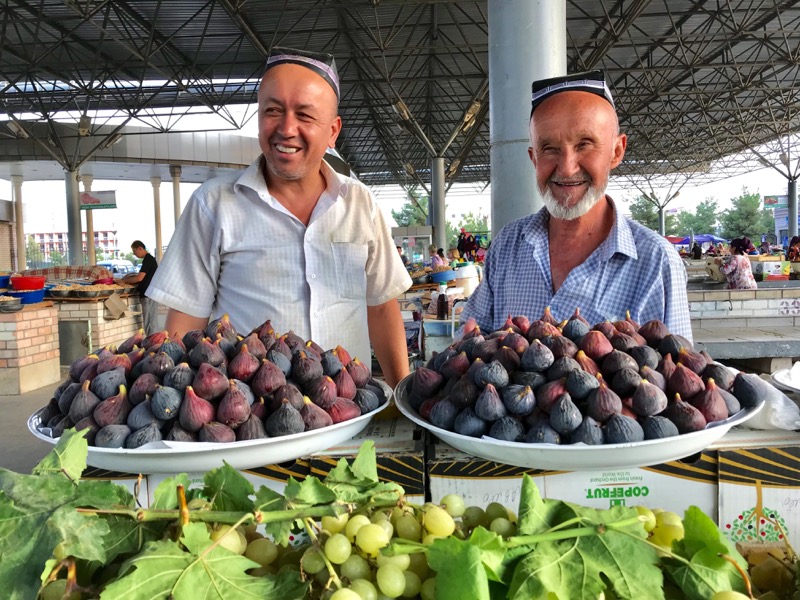
Here are 8 breathtaking ways to experience UNESCO treasures in Uzbekistan:
1) Site: Silk Road’s Heart, Samarkand
2) Intangible: Celebrate Navruz
3) Site: Bukhara Beckons
4) Intangible: Plates of Plov
5) Site: Khiva’s Living Past
6) Intangible: Margilan’s Silk Road Silk
7) Site: A Royal City, Shahrisabz
8) Intangible: Shashmaqom Music
1) UNESCO Site: Samarkand, the Silk Road’s Heart
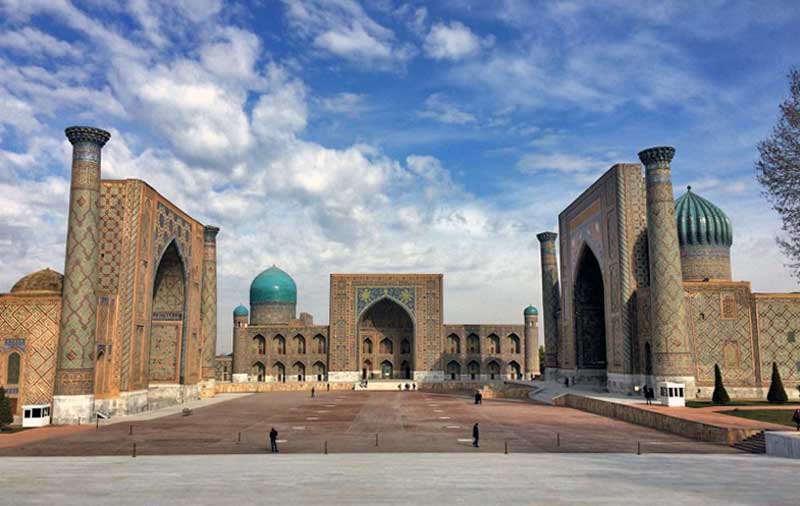
Considered the “heart of the heart of the Silk Road” and one of the oldest cities in the world, Samarkand has captured the imagination of storytellers, poets, sojourners, and travelers for thousands of years. Its iconic Registan (“Sandy Place”) is the town’s main square and is considered a masterpiece of Persian architecture.
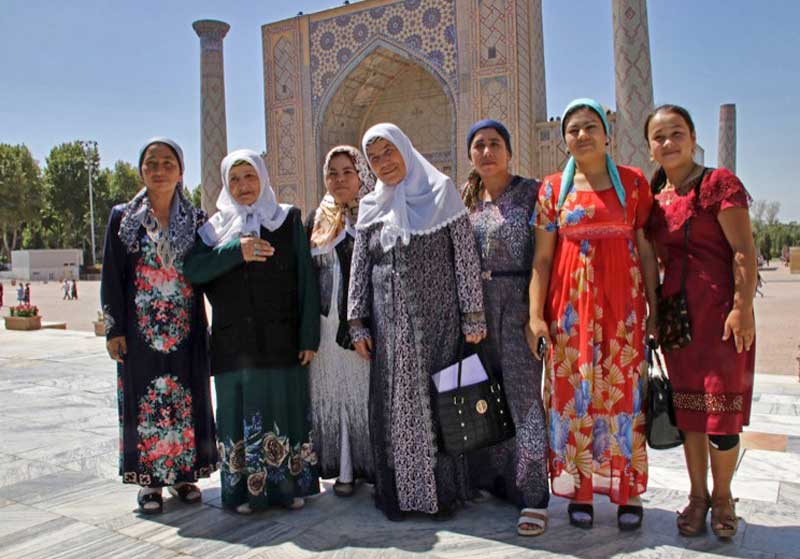
Must-see:
Three tiled madrassahs harmoniously ring the Registan: On the western side is the original 1420 Ulug Bek Madrassah, named for the brilliant mathematician, astronomer, and Timurid sultan, with its tiled portal depicting the sky and stars. On the eastern side is the restored 1636 Shir-Dor (“Lions”) Madrassah, decorated with mosaics of lions, deer, and controversial rising suns. Between the two is Tillya-Kori (“Gilded”) Madrassah, built on the site of a caravanserai in 1660, and embedded with gold leaf and glazed tiled mosaics with geometric and floral motifs.
(click image to view larger photo)
Travel to Samarkand
- Journey Through Central Asia: The 5 ‘Stans (view video)
- Backstreets & Bazaars of Uzbekistan
- Silk Road Backroads & Byways
- Silk Road Odyssey: Caravan Across Uzbekistan
You can also travel on our Essential Uzbekistan and Essential Central Asia private independent itineraries, which explore Samarkand. Or, design a custom private journey handcrafted to your interests, pace, and dates.
2) UNESCO Intangible: Celebrate Navruz
Uzbekistan is a grand place to celebrate the vibrant springtime festival of Navruz! The lively Silk Road cities of Samarkand, Bukhara, and Khiva are renowned for pulling out all the stops for this UNESCO-listed, multi-day beloved holiday welcoming spring and the beginning of a new year.
(click image to view larger photo)
Navruz is an ancient Zoroastrian festival celebrated in Central Asia, the Middle East, and Caucasus, focused on rebirth and renewal. The date varies according to the spring equinox – typically between March 19-21 – and often referred to as “Persian New Year.” Families gather to clean the house, visit relatives, exchange gifts, and cook up bountiful feasts of plov – Uzbekistan’s delicious national rice dish – as well as bake special Navruz round bread stamped with colorful flower motifs.
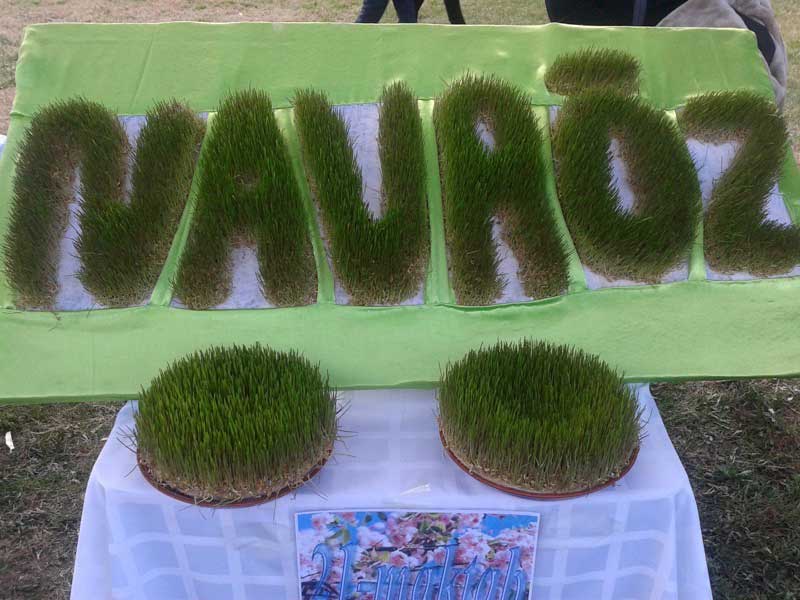
Must-try:
A “Navruz-only” culinary tradition is germinating wheatgrass for a sacred dish called sumalak (“30 Angels”). It takes a week to sprout, prepare, and cook – typically with women taking turns stirring the pot all night long before Navruz begins, with joyful talking, singing and dancing to stay awake. The sweet paste is served with warm bread and tea, and said to bring joy, happiness, and good luck in the coming year.
(click image to view larger photo)
Related Story
• Celebrating Navruz in Uzbekistan: My Favorite Moments on a Festive Journey
Celebrate Navruz
Join in Navruz festivities on MIR’s small group tour, Backstreets & Bazaars of Uzbekistan, which not only visits Samarkand, Bukhara, Khiva, and Tashkent, but is timed at the height of this joyous springtime event. MIR can also create a custom private journey that incorporates Navruz and the welcoming of springtime in Uzbekistan
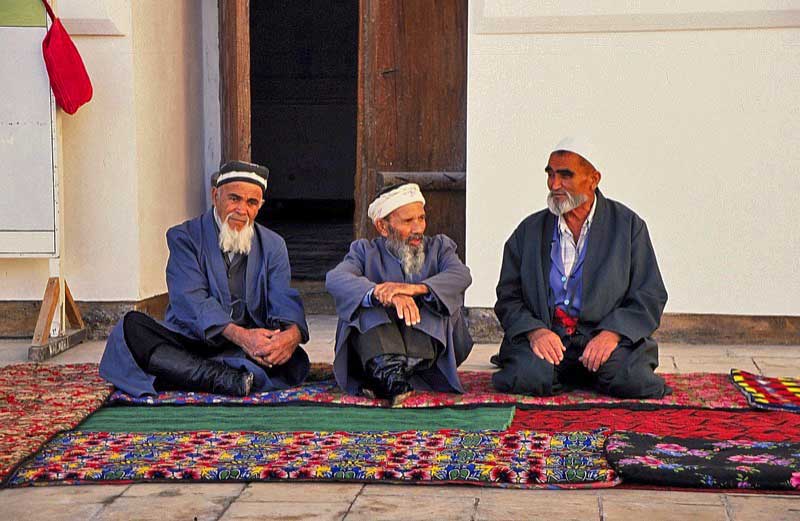
3) UNESCO Site: Bukhara Beckons
Bukhara has been a prized chess piece for more than a thousand years, from the challenging politics of rival countries – think the “Great Game” between Russia and Great Britain – to earlier conquerors who set their strategic sights on this city – such as Genghis Khan and Tamerlane (Amir Timur). With its location and stunning architecture, it’s easy to understand why so many throughout history have fought, and died, for this Silk Road oasis.
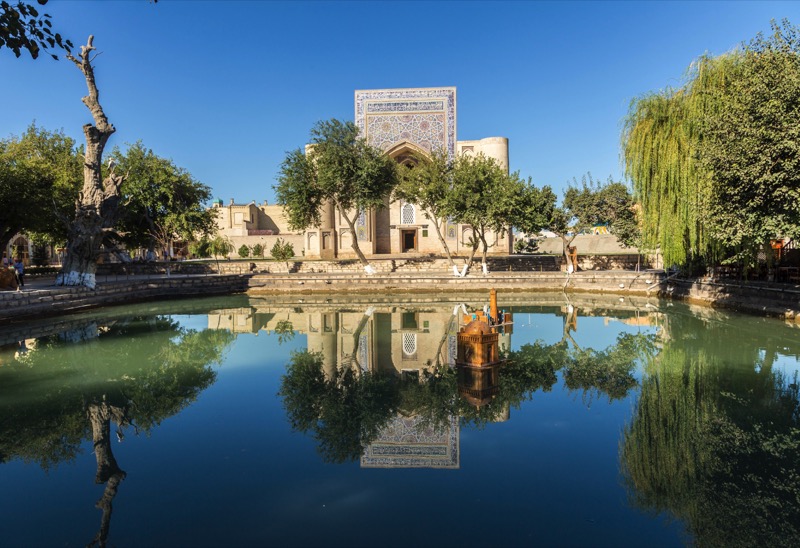
Must-see:
Bukhara’s UNESCO-listed labyrinthine Old Town of more than 140 protected treasures is centered around the refreshing and peaceful Lyabi-Hauz (“By the Pond”) Plaza, a social gathering place since 1620. Shaded by centuries-old massive mulberry trees, here local Uzbeks gather around the pool for tea, conversation, and – perhaps ironically – chess games. Ringing the plaza are religious masterpieces: 16th-century Kukeldash Madrassah to the north, the largest Koranic school in Central Asia; Khanaka Nadir Divan-Begi on the west side, built in 1622 as a religious place for Sufi dervishes to rest and reflect; and the 1622 Madrassah Nadir Divan-Begi on the pool’s east side, decorated with tiles depicting a Mongol sun and turquoise mythical birds of happiness.
(click image to view larger photo)
Travel to Bukhara
Marvel at the vision of those who created this beautiful Bukharan UNESCO-designated oasis on these MIR small group tours:
- Journey Through Central Asia: The 5 ‘Stans (view video)
- Backstreets & Bazaars of Uzbekistan
- Silk Road Backroads & Byways
- Silk Road Odyssey: Caravan Across Uzbekistan
You can also travel on our Essential Uzbekistan and Essential Central Asia private independent itineraries, which explore Bukhara. Another option is a handcrafted custom private journey that includes Bukhara, created specifically to your interests, pace, and dates.
4) UNESCO Intangible: Plates of Plov
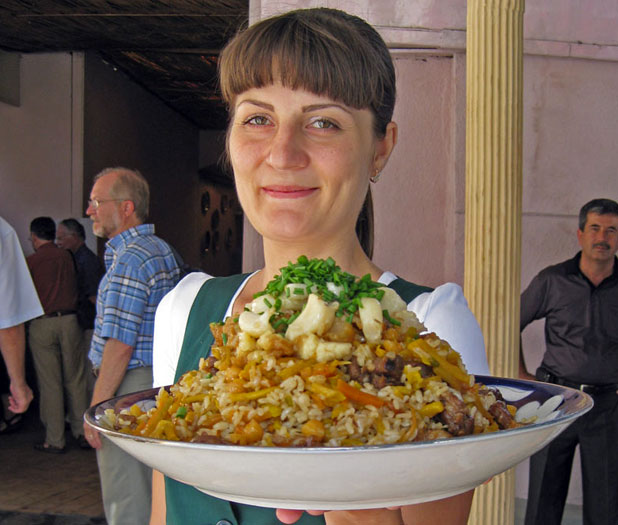
With more than 100 variations, plov is Uzbekistan’s ubiquitous national rice dish – typically made with mutton or beef, carrots, onions, and imbued with fragrant Silk Road spices. Recognized by UNESCO as a cultural treasure, plov is more than a meal: it is Uzbeks’ ancestral food and a culinary tradition handed down from generation to generation.
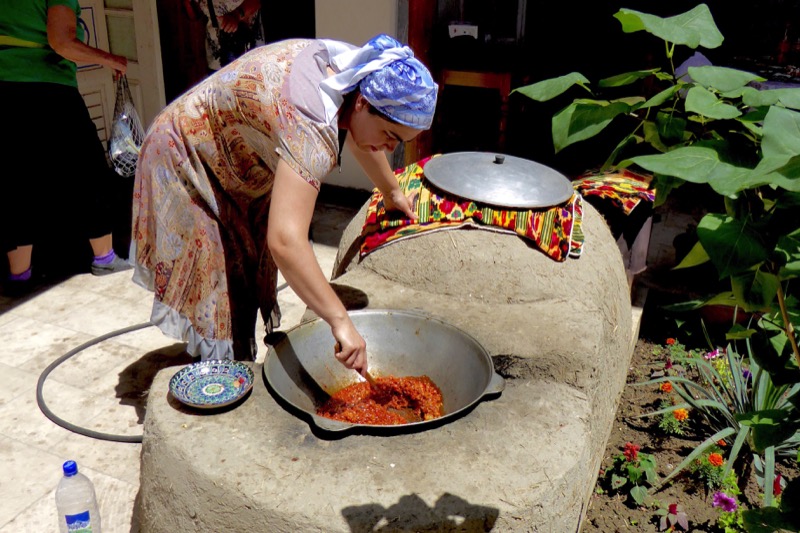
Must-try:
Plov is created together and shared together, forging community and national identity that makes it worthy of UNESCO’s cultural designation. It’s created as a celebratory dish for weddings and Navruz, the Central Asian springtime holiday, as well as for funerals and prayer vigils. If you have the opportunity, listen for the sizzle and watch the steam in different stages of putting plov together. You can also watch MIR’s video of making plov, step-by-step.
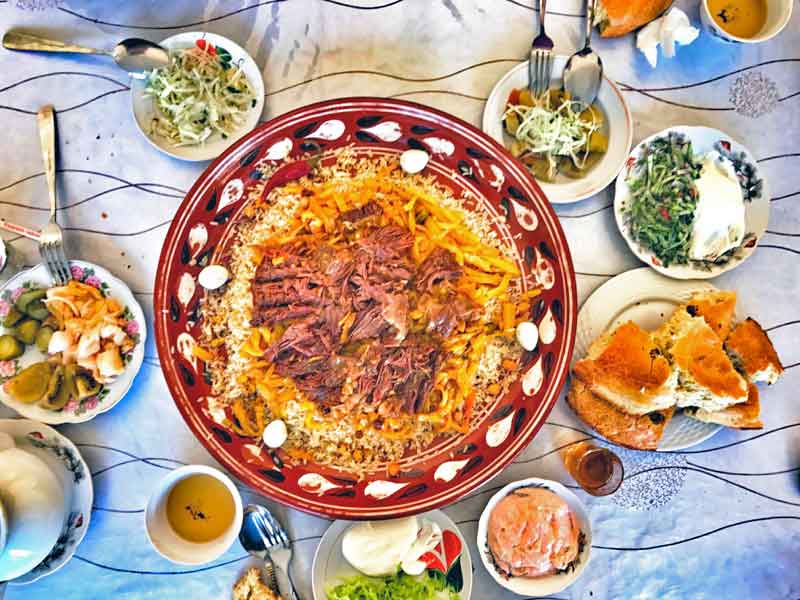
Related Story
• A Traveler’s Tale: The Art of Homemade Plov in Bukhara, Uzbekistan (video)
(click image to view larger photo)
MIR Tours with Plates of Plov
This national dish is everywhere, so chances are you’ll taste it on any MIR tour in Uzbekistan. It is definitely on the menu for Backstreets & Bazaars of Uzbekistan, where it’s enjoyed as part of the Navruz festivities. Or, design a custom private journey that features local plov variations wherever you travel in Uzbekistan, handcrafted to your dates, pace, and interests.
5) UNESCO Site: Khiva’s Living Past
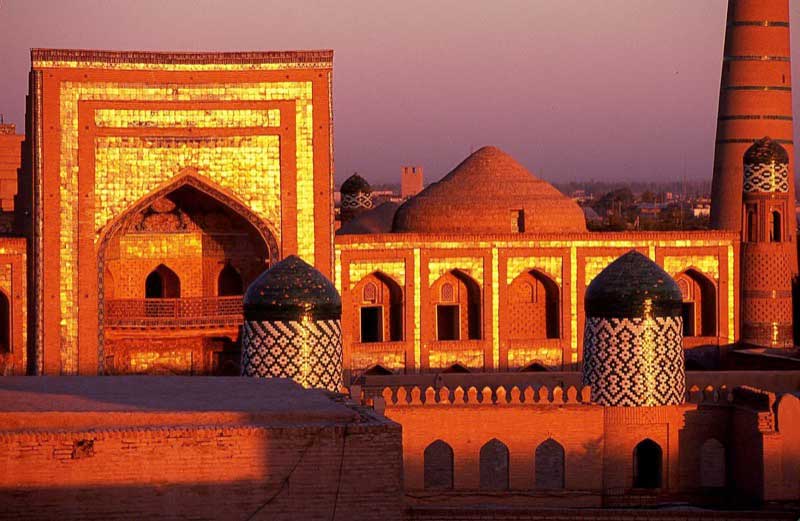
Think of Khiva as a “wrinkle in time,” time travel back to the days of Silk Road caravans when weary sojourners stopped here for rest and refueling, and where merchants, artisans, and families live and work today just as their ancestors did centuries ago. Harkening back more than 2,000 years (legend says Noah’s son put down roots after discovering water here), the ancient Silk Road desert oasis of Khiva is often called a “living museum,” with its UNESCO-listed Old Town (Ichon Qala) of intact mosques, blue-green tiled minarets, and winding alleys.
(click image to view larger photo)
Must-see:
Walking – meandering is even better – quickly imbues you with a feel for this town’s Silk Road past of tiled mosques, madrassahs, and markets, along with shops and age-old houses passed down to new generations of families. A mud-brick enclosure, Ichon Qala is surrounded by graceful, undulating waves of walls; be sure to climb the stairway up to the city walls at Boghcha Darvaza (“Garden Gate”) offering outstanding views – especially at sunrise and sunset. A striking feature is Khiva’s oldest mosque, Juma (“Friday”) Mosque, which rests on a forest of 213 hand-carved wooden pillars – some more than 1,000 years old. Another Ichon-Qala highlight is the 1841 large, sumptuous Tash-Hauli Palace (“Stone House”), where the khan, his wives, and family once lived in more than 150 rooms surrounding nine courtyards.
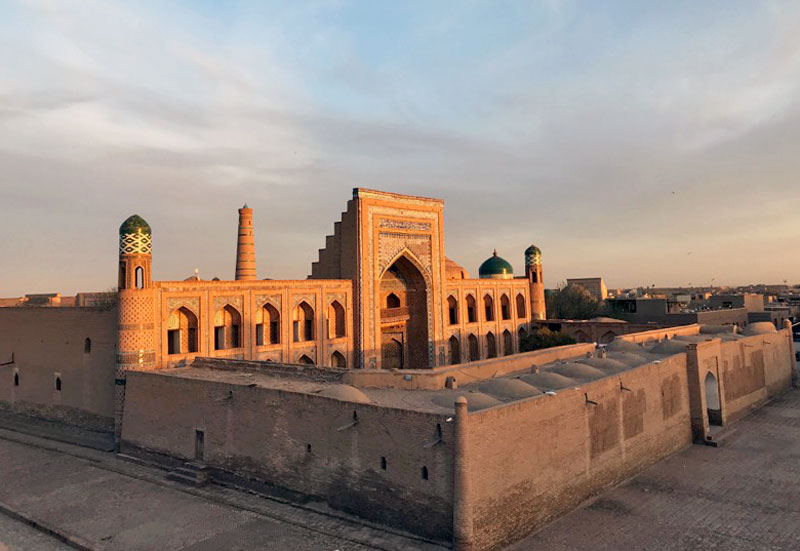
Other UNESCO top sights in Khiva include Kalta Minor (“Short Minaret”), Islam Khodja Minor, and Kunya Ark.
(click image to view larger photo)
Travel to Khiva
See for yourself on these MIR small group tours why Khiva’s Silk Road “living museum” is so beloved by so many:
- Silk Road Backroads & Byways
- Silk Road Odyssey: Caravan Across Uzbekistan
- Journey Through Central Asia: The 5 ‘Stans (view video)
- Backstreets & Bazaars of Uzbekistan
You can also travel on our Essential Uzbekistan and Essential Central Asia private independent itineraries, which take you deep into the UNESCO treasures of Khiva. Another option is a handcrafted custom private tour that includes Khiva, created specifically to your interests, pace, and dates.
6) UNESCO Intangible: Margilan’s Silk Road Silk
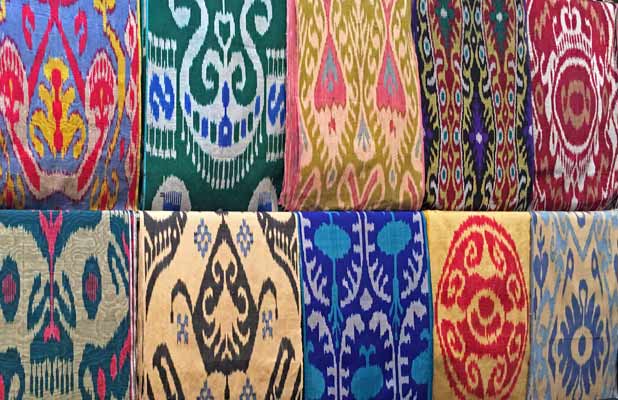
This is “Ground Zero” for silk: those who make it, and those who love this delicate, natural fabric. A major Silk Road stop since days of Alexander the Great, the Fergana Valley’s town of Margilan is the heart of some of the world’s best silk and oldest silk-weaving techniques – so revered that they are on UNESCO’s List of Intangible Cultural Heritage. Here is the home of Uzbekistan’s national fabrics: silk-and-cotton adras as well as pure silk called khan atlas, upon which utterly distinctive Uzbek patterns are created for scarves, dresses, robes, and pillows.
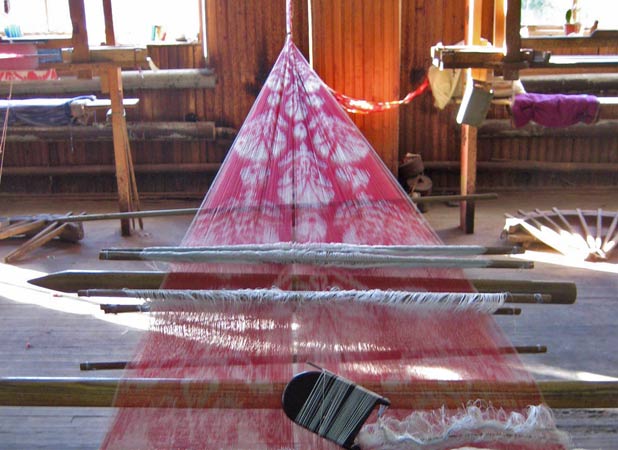
(click image to view larger photo)
Must-see:
Viewing any part of the process of silk-making is amazing – from silkworms munching on mulberry leaves, the spinning their cocoons to dip-dyeing silk threads and weaving silk fabric into cloud-like patterns on giant looms, as you can see – and hear – in this MIR video.
MIR Tours with Margilan’s Iconic Silk-Making
You can view the process of silk-making in many places throughout Uzbekistan, including MIR’s small group tours that travel to the Fergana Valley’s renowned silk-making town of Margilan:
• Silk Road Odyssey: Caravan Across Uzbekistan
• Journey Through Central Asia: The 5 ‘Stans
MIR can also create a handcrafted private tour that includes Margilan and its UNESCO-listed atlas and adras silk production. You can also add a visit to an Uzbek silk workshop to one of our private independent itineraries or small group tours to Central Asia.
7) UNESCO Site: A Royal City, Shahrisabz
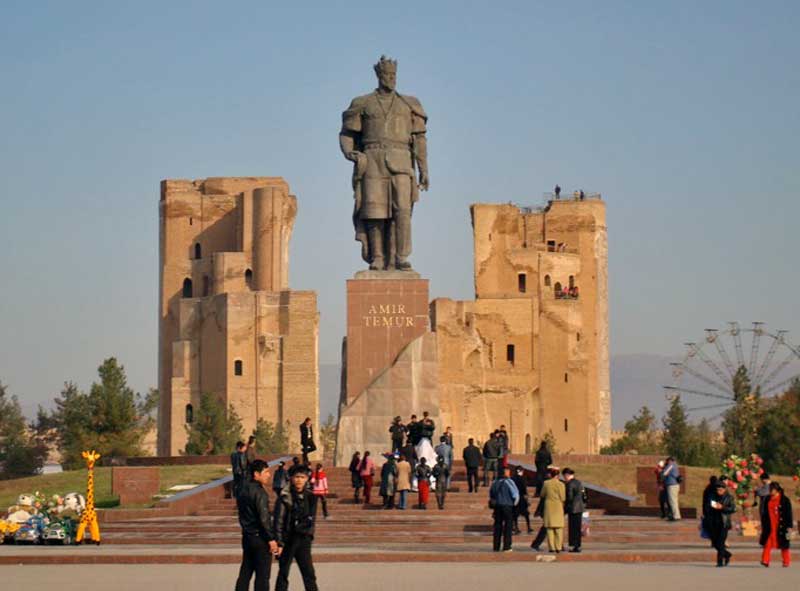
More than 2,000 years old, Shahrisabz (“Green City”) was the thriving cultural and political center of the Kesh region in the 14th and 15th century. Yet beyond its stellar achievements, Shahrisabz is perhaps best-known as the birthplace of the great conqueror, Tamerlane (Amir Timur).
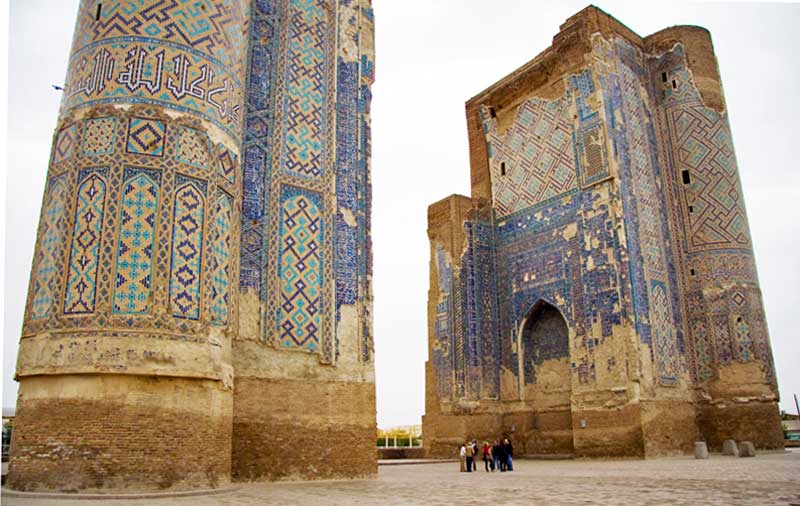
Must-see:
- Still standing today are the ruins of Tamerlane’s ambitious 14th-century project, Ak Saray (“White Palace”), a 24-year undertaking with a massive blue-glazed tile mosaic portal that once towered 213 feet tall; today it’s reduced to about 130 feet. Imagine what Tamerlane’s summer palace looked like originally, rivaling anything built in Samarkand! A relatively new statue of a strong, tall Tamerlane belies his injured right hand and leg – thus his nickname, “Timur the Lame.”
Other UNESCO top sights in Shahrisabz include Hazrat-i Imam Complex with Jakhongir Mausoleum, and Kok Gumbaz Mosque.
(click image to view larger photo)
Travel to Shahrisabz
Imagine palatial living among the ruins of a conqueror’s hometown, Shahrisabz, on these MIR small group tours:
- Silk Road Odyssey: Caravan Across Uzbekistan
- Journey Through Central Asia: The 5 ‘Stans (view video)
- Silk Road Backroads & Byways
You can also travel on our Essential Uzbekistan and Essential Central Asia private independent itineraries, which take you up-close to the royal ruins of Shahrisabz. Or, design a handcrafted custom private journey that includes UNESCO-listed Shahrisabz, created to your specific interests, pace, and dates.
8) UNESCO Intangible: Shashmaqom Music
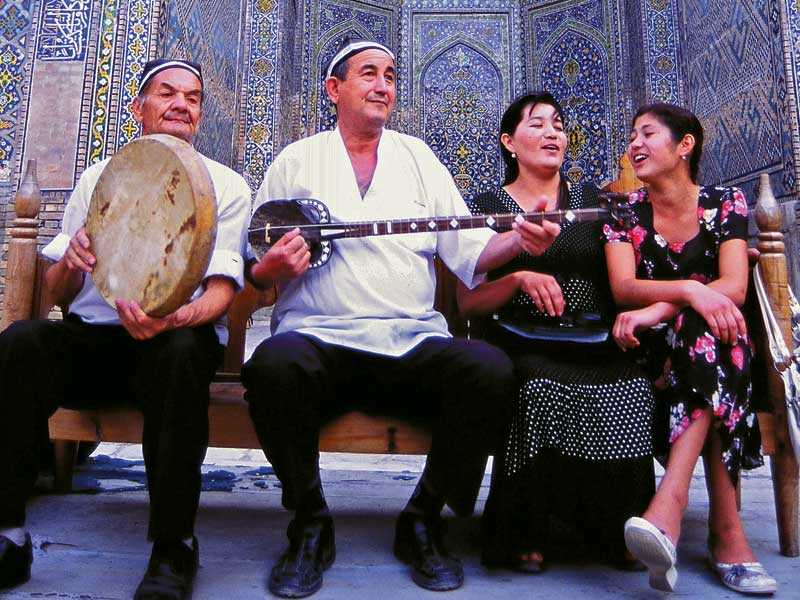
Uzbekistan’s music is melded from many cultures, traditions, and regions, and notably reflected in UNESCO-protected shashmaqom (“six cycles”) musical genre, a fusion of Tajik and Uzbek traditional melodies with Sufi poetry-derived lyrics, passed down orally from generation to generation. Harkening as far back as the 10th century, shashmaqom soloists or ensembles are usually accompanied by traditional instruments, including a two-stringed, long-necked lute (dutar) and doira, a large tambourine.
Must-hear:
Watch and listen to a shashmaqom performance in this UNESCO video.
MIR Tours with Shashmaqom Music
Enjoy the soaring, Central Asian melodies of shashmaqom music on MIR’s tour, Backstreets & Bazaars of Uzbekistan, where it’s enjoyed as part of Navruz festivities.
Or, dive deep into the history and melodies of this UNESCO-listed music on a custom private tour that’s crafted to your specific interests, pace, and dates. You can also add a shashmaqom performance to one of our private independent itineraries or small group tours to Central Asia, keeping in mind that Tashkent Convervatory specializes in teaching shasmaqom to new generations of Uzbek singers and musicians.
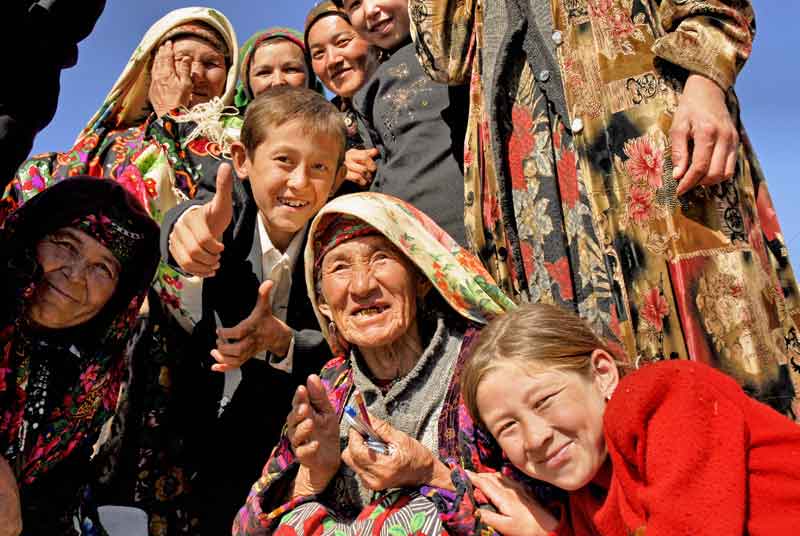
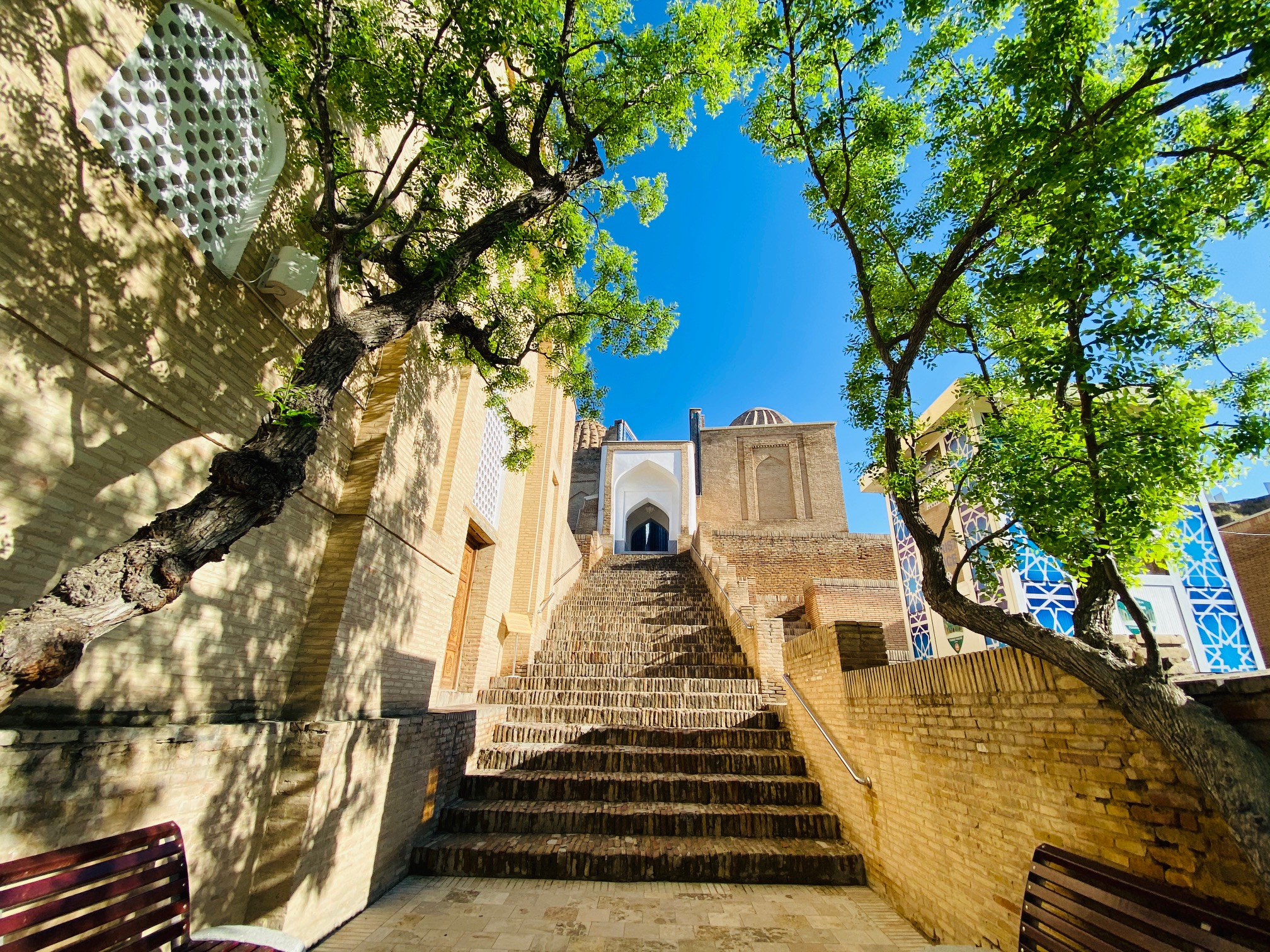
Travel to Uzbekistan’s UNESCO Sites with MIR
MIR has more than 30 years of travel experience in Central Asia, with an affiliate office in Uzbekistan. Our full service, dedication, commitment to quality, and destination expertise have twice earned us a place on National Geographic Adventure’s list of “Best Adventure Travel Companies on Earth.”
MIR has unparalleled destination expertise in creating immersive cultural experiences in our destinations, including UNESCO-studded Uzbekistan.
See for yourself why UNESCO called out these amazing places and experiences in Uzbekistan on these small group tours:
- Silk Road Backroads & Byways
- Journey Through Central Asia: The 5 ‘Stans’
- Backstreets & Bazaars of Uzbekistan
- Silk Road Odyssey: Caravan Across Uzbekistan
Or on a rail journey by private train:
- Essence of the Silk Road & Beyond by Private Train
- Essence of the Silk Road by Private Train (Eastbound / Westbound)
- Caspian Odyssey by Private Train: Eastbound
- Republics of the Silk Road by Private Train
- The Silk Route ‘Stans by Private Train: Westbound
- The Silk Route by Private Train: Westbound
You can also book a custom private journey or tour extension to Uzbekistan based on your interests and preferred dates of travel. Take a look at our Essential Uzbekistan and Essential Central Asia itineraries, which are ready-made for your private trip. You can even use them as a starting point for your own custom itinerary.
Chat with one of our destination specialists today!

